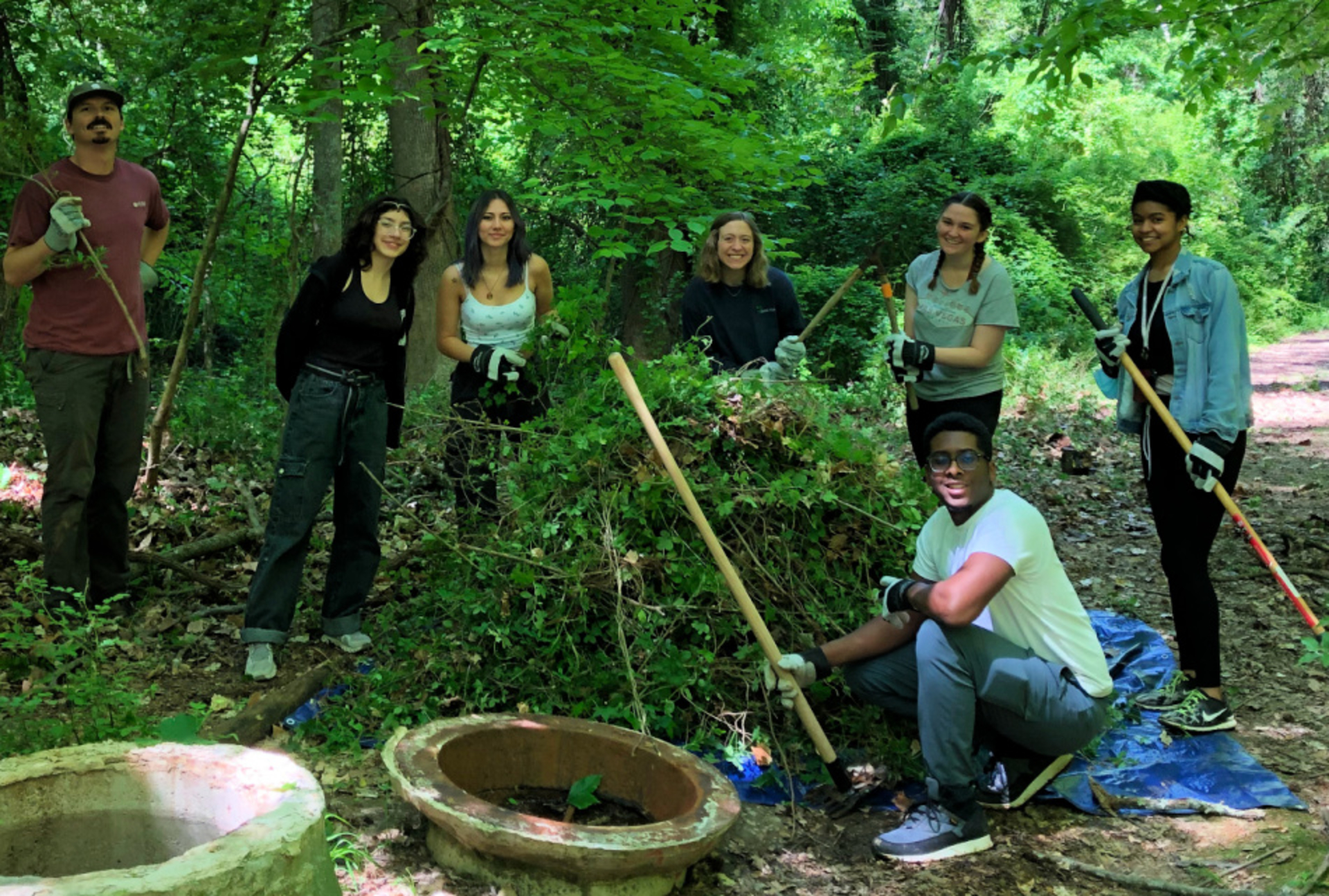
Brandon Sisnett '23 wanted his contribution project to have a lasting impact on future Guilfordians. He hopes his work in Guilford Woods does just that.
Brandon Sisnett ’23 likes to tell the story of coming home from elementary school after the teacher asked the students what they wanted to be when they grew up. There were the usual answers of police officers, teachers, doctors and lawyers. Brandon gave his mom a different answer.
“I told her I wanted to be an environmental scientist,” says Brandon, of Louisville, Ky., who will graduate with a bachelor’s degree in Environmental Studies and a minor in Traditional Art. “Mom tells me to this day that she was surprised to hear me say that just so eloquently and confidently.”
But before leaving Guilford, Brandon put his degree into action by organizing a group of students to clear out a large swath of invasive plants along the Underground Railroad trail in Guilford Woods.
About two dozen Guilfordians took part in the cleanup, which was Brandon’s service project. They came with gloves and hats, buckets and shovels, rakes and hoes to push back akebia, an invasive deciduous climbing vine that invades forested areas throughout the eastern United States and has hit Guilford woods particularly hard in recent years.
“It’s one of the most prominent and invasive species in the Guilford Woods,” says Brandon.
“While it isn't too destructive with wildlife initially, once it overgrows it can tend to rise up in a sort of vine-like pattern and wrap around any type of plant or anything just so it can get higher and (a better) view of the sun.”
Over time, Brandon says the vine pulls down other native wildlife like small tree saplings and eventually overtakes them.
Students removing akebia from the woods in the course of one morning barely puts a dent into the plant’s onward march, but it’s a start, says Brandon.
Tony VanWinkle, an Assistant Professor of Sustainable Food Systems and Environmental Studies at the College, says, barring the use of poisons, it’s unrealistic to expect the College to eradicate all invasive plants in the woods.
Tony says a better strategy is to find a balance between native and non-native plants in the woods. He hopes to one day reintroduce native plants like paw paw and dwarf chestnut trees, elderberry, cohosh and blood root. “There’s a lot of medicinal and culinary value to these plants that enslaved people relied upon on their journey, or journeys, to freedom,” he says.
Brandon is hoping other Guilford students will follow him. Once the plant is brought under control, there’s a possibility of using goats and pigs to keep the akebia at bay. “The goats will eat anything above the surface and a lot of pigs are good at rooting,” says Tony.
“Hopefully what Brandon’s doing is catalyzing,” says Tony. “Maybe future students will come behind him and continue what he started.”
Brandon hopes so. “I know a lot of students have good memories of the woods – I do. It would be nice if we could take care of it for future students.”

